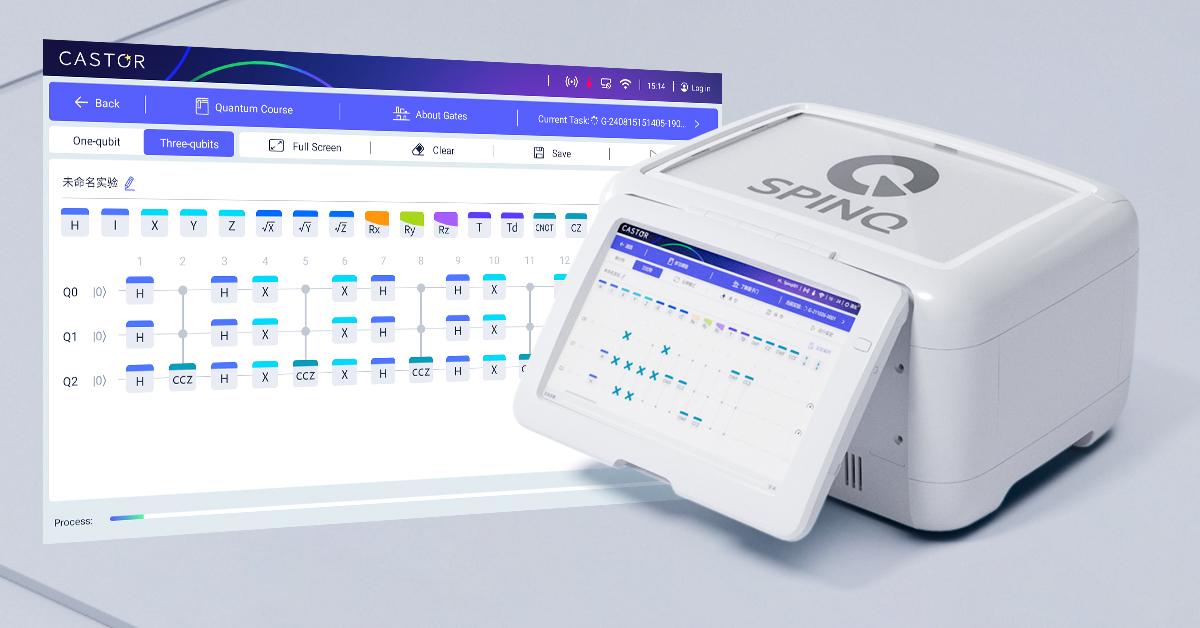Quantum Education Kits: Learn Quantum Computing by Doing
2025.04.16 · Blog
Quantum computing is no longer just the domain of researchers and physicists—it's becoming an essential part of future-ready STEM education. As the demand for quantum talent rises, Quantum Education Kits are emerging as vital tools for schools, universities, and self-learners to explore quantum mechanics and quantum computing in an accessible, hands-on way.
In this blog, we'll explore what quantum education kits are, why they matter, what they typically include, and how they're helping shape the next generation of quantum scientists.
What Are Quantum Education Kits?
Quantum Education Kits are specially designed packages—either physical, digital, or hybrid—that allow learners to experiment with quantum principles interactively. They range from simplified quantum simulators and virtual labs to actual hardware-based educational quantum computers that operate at room temperature.
These quantum education kits are tailored for:
-
High school and university students
-
STEM educators and instructors
-
Quantum computing hobbyists and lifelong learners
Whether you want to explore qubits, superposition, quantum entanglement, or quantum gates, these kits break down abstract concepts into tangible quantum learning experiences.
Why Quantum Education Kits Matter
Here's why quantum education kits are revolutionizing how we teach and learn quantum computing:
-
Hands-On Learning: Learners can grasp quantum principles more effectively through practical experiments and simulations using quantum education kits.
-
Curriculum Integration: Many kits align with modern STEM curricula and support learning outcomes in physics, computer science, and engineering.
-
Bridging Theory and Practice: Learners go beyond equations to design, run, and analyze real quantum circuits.
-
Global Accessibility: Portable and often affordable, these kits enable institutions around the world to democratize access to quantum education.
What's Inside a Quantum Education Kit?
Though the exact content varies, a well-designed quantum education kit often includes:
-
Quantum Computer or Simulator: Either a small-scale quantum processor (e.g., NMR-based) or a digital platform
-
Software Interface: GUI (Graphical User Interface) or cloud-based environment for running quantum algorithms
-
Preloaded Experiments: Tutorials and labs on quantum gates, teleportation, quantum algorithms, etc.
-
Curriculum Materials: Teacher guides, worksheets, lab notebooks, and assessment tools
-
Support Resources: Community forums, technical documentation, video walkthroughs
Some advanced kits even offer cloud access to real superconducting or trapped-ion quantum computers.
Real-World Example: SpinQ's Education-Grade Quantum Computer Kits
SpinQ has developed a series of portable, compact, room-temperature desktop quantum computers, including:
#1 SpinQ Gemini Mini/Mini Pro: An NMR-based 2-qubit Portable Quantum Computer
SpinQ Gemini Mini/Mini Pro offers a comprehensive solution for quantum computing education and demonstrations, integrating a built-in touchscreen, control system, and structured curriculum. Designed for both classroom instruction and self-learning, it enables learners from diverse academic backgrounds to quickly understand the basics of quantum computing and algorithm design.

#2 SpinQ Triangulum Mini: An NMR-based 3-qubit Portable Quantum Computer
With a newly designed pulse scheme, SpinQ Triangulum Mini offers a more stable experimental process, enabling a wider range of quantum computing experiments and meeting more advanced design requirements.

#3 SpinQ Triangulum Ⅱ: A 3-qubit Desktop NMR Quantum Computer
SpinQ Triangulum Ⅱ supports all 3-qubit quantum algorithms, enables users to freely write quantum programs, and offers open hardware-level pulse sequence editing. It is also cost-effective, requires no maintenance, and delivers high operational stability.
#4 SpinQ Gemini Lab: A Quantum Computing Experimental Platform
As a one-stop experimental platform, SpinQ Gemini Lab covers everything from quantum mechanics to quantum computing. Equipped with advanced radio frequency technology and a highly open architecture, it supports experiments at the pulse, gate, and algorithm levels, making it ideal for both teaching and research in higher education.

These devices are already being used in educational institutions across the U.S., Canada, China, and Europe to train students in quantum programming and physics.
Case Studies:
Who Should Use Quantum Education Kits?
Quantum kits are ideal for:
-
Educators building hands-on quantum modules
-
Students curious about the future of computing
-
Researchers creating outreach or demo tools
-
STEM clubs or coding camps seeking engaging content
-
Quantum computing startups running early-stage education programs
Whether you're just getting started or building a full quantum course, these kits offer scalability and interactivity rarely found in textbooks.
The Future of Quantum Learning
As quantum technologies continue to grow, quantum literacy will be a foundational skill. Quantum education kits are helping to fill this urgent talent gap by making complex science approachable, practical, and even fun.
From virtual simulations to real mini quantum processors, these kits are turning abstract quantum theory into engaging exploration, building a quantum-ready generation one experiment at a time.
Conclusion
Quantum Education Kits are the gateway to understanding and innovating with quantum technologies. By enabling hands-on experience and demystifying quantum concepts, they empower learners to actively participate in the coming quantum era.
Looking to bring quantum computing to your classroom or lab? A well-designed education kit could be the perfect place to start.
Featured Content







